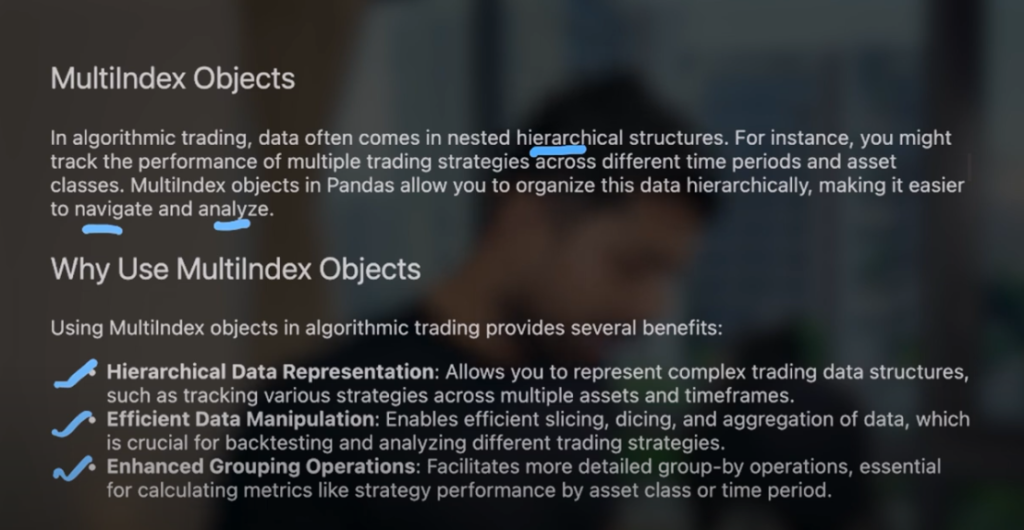Multi-Indexing is a very important and powerful feature in Python’s Pandas library, especially when you are doing Algorithmic Trading. Because whenever you fetch data from an API or external source, it mostly comes in Multi-Index form. Let’s understand this in simple language.
Series vs DataFrame – Basic Understanding
- Series is a 1D data structure of Pandas which has only one column.
- DataFrame is a 2D data structure which has more than one column and index.
For example, if you want a value in a Series, then only the index is required. But to access a value in DataFrame, information of both Row and Column is required. This is why Series is called 1D and DataFrame is called 2D.
Conversion from Stack and Unstack to Series and DataFrame
In Pandas, we can convert a Series to DataFrame and DataFrame to Series using stack() and unstack(). These functions are very useful when working with Multi-Index. For example, if you have a 2-level index like Date and Ticker (Apple, Google etc.), you can easily reshape it.
What is Multi-Indexing?
When a DataFrame has more than one index level, it is called Multi-Indexing. For example, when you fetch data from Yahoo Finance, Date is an index and inside it there are prices of multiple stocks (Apple, Amazon, Microsoft) — this is a classic Multi-Index data.
In Multi-Indexing, you can identify Level 0 and Level 1, such as:
- Level 0: Date
- Level 1: Ticker Name (eg Apple, Amazon)
Why is Multi-Indexing important in Algo Trading?
1. Hierarchical Data Representation
In Algo Trading, we have to track many assets and strategies in the same data. In such a situation, Multi-Index data gives you this facility in hierarchical structure.
2. Efficient Data Manipulation
When you have nested data, you can easily do Slicing, Dicing and Aggregation using Multi-Index. This is especially very useful during Backtesting.
3. Enhanced Grouping Operations
If you want to check performance based on different asset classes or time frames, then Multi-Index gives you the facility of easy GroupBy operation.

Manage Multi-Index Columns easily
In Pandas, we use functions like swaplevel(), sort_index(), reset_index() etc. to manage Multi-Index Columns. This allows us to customize the structure of DataFrame as per our requirement.
Why is Multi-Indexing important for Algo Trading?
In Algo Trading:
- Data is mostly multi-dimensional
- Data received from APIs is Multi-Index
- Multi-level grouping is important for Backtesting
So if you are doing Algo Trading with Python, then it is very important to understand and use Multi-Indexing.
Multi-Indexing in Pandas is a core concept in algo trading. Whether you are doing Strategy Testing, Backtesting or Live Data Monitoring — Multi-Indexing allows you to manage data in a more simple and effective way.
If you haven’t tried your hand at Pandas Multi-Indexing yet, now is the time! Because you become a true professional data analyst only when you start understanding High Dimensional Data.
Watch this Day 30 video tutorial
Day 30: MultiIndex in Pandas
![]()

